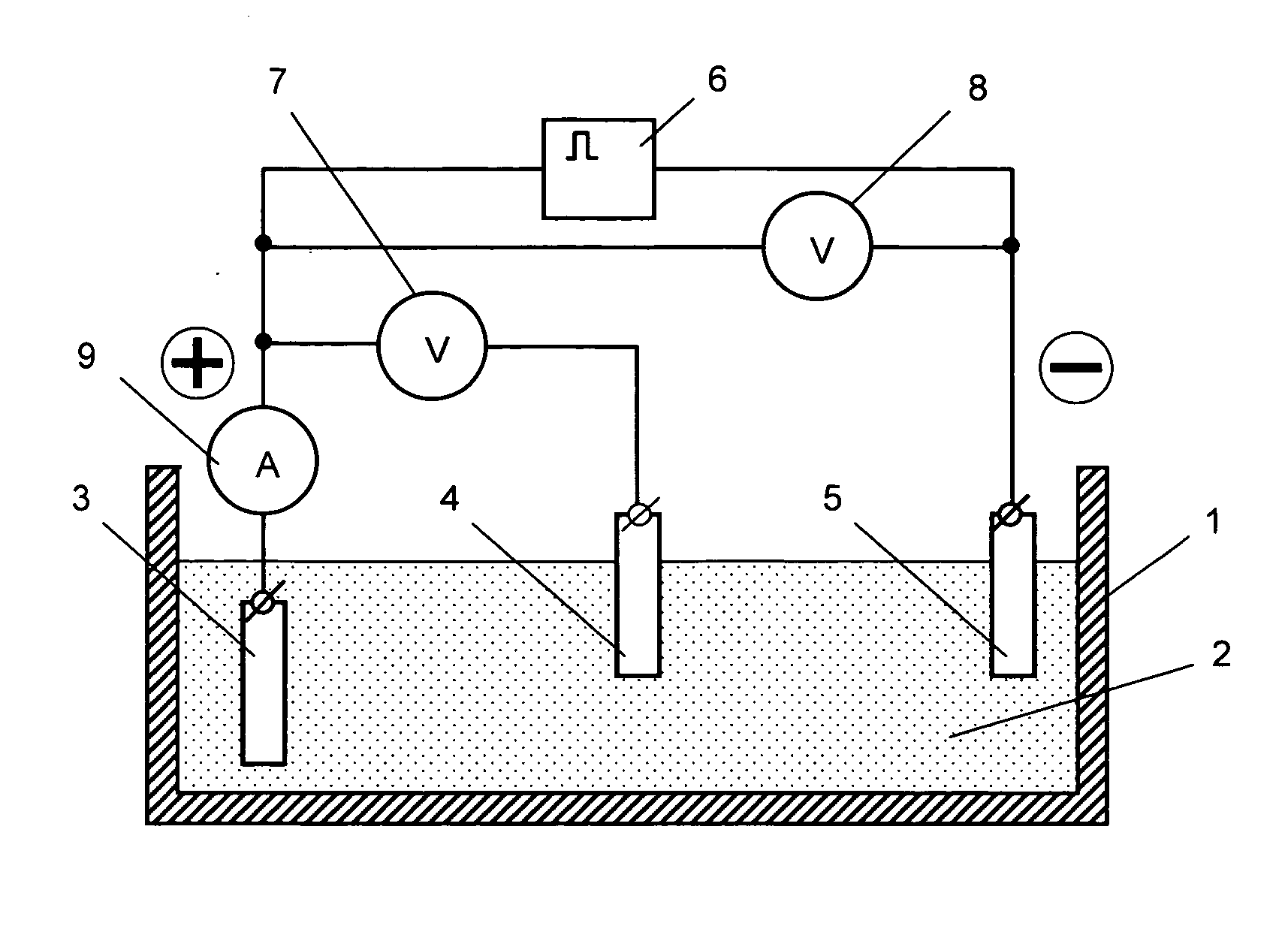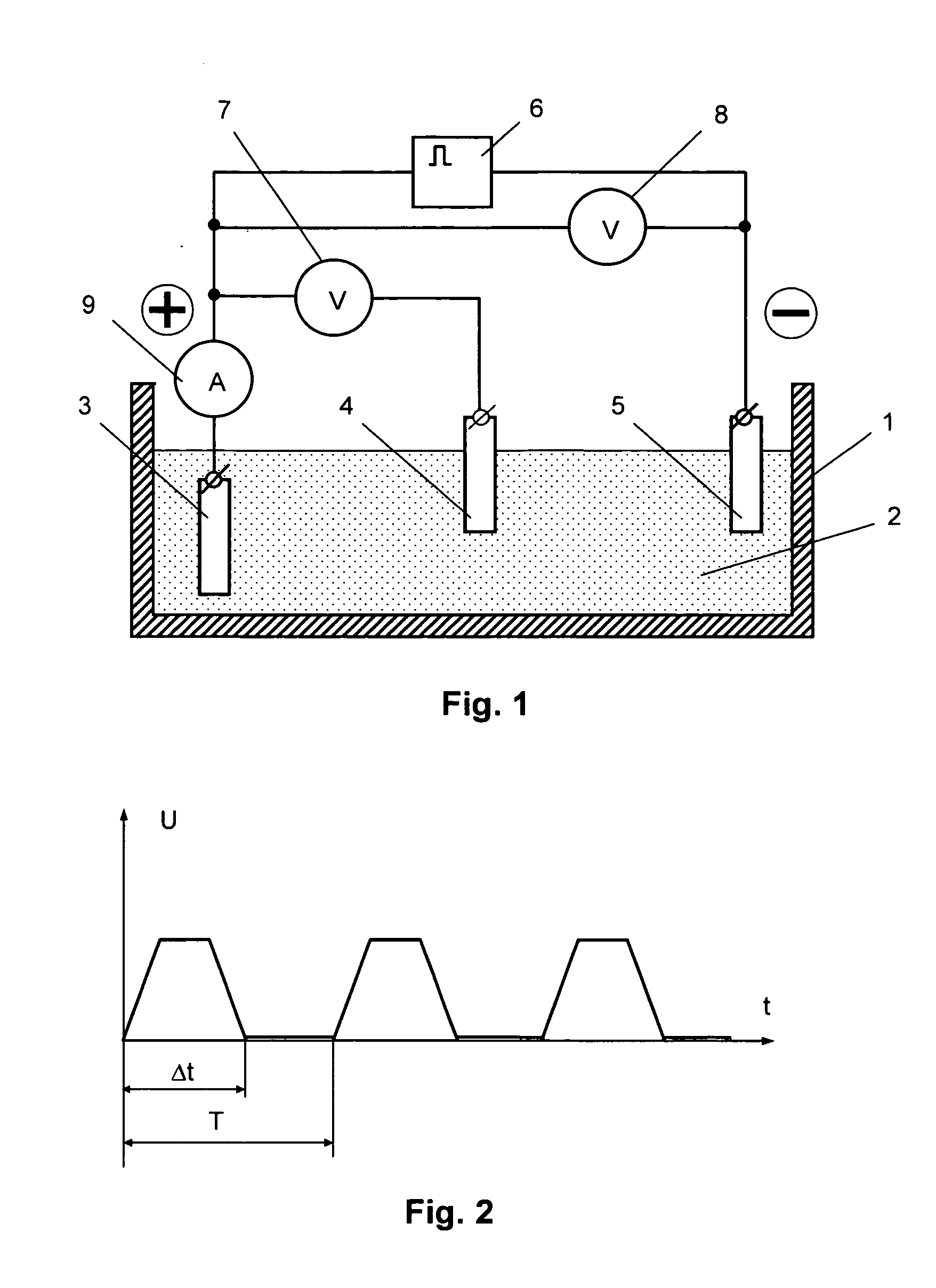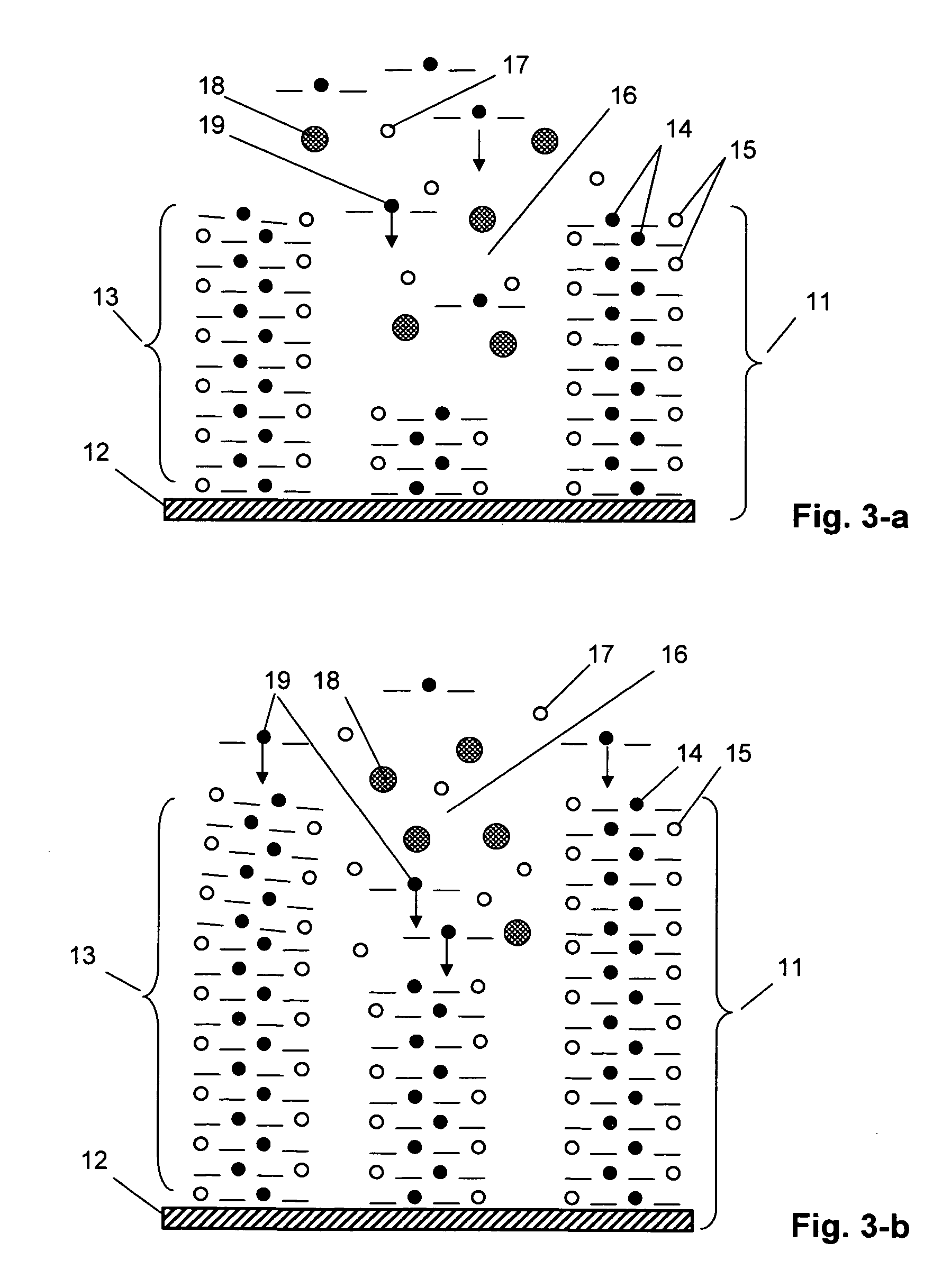Method for the manufacture of electrode for energy-storage devices
a technology of energy storage and electrodes, applied in the field of electrochemistry, can solve the problems of poor energy-accumulating properties and the inability to produce electrodes with high specific energy capacity, and achieve the effect of improving the quality of electrodes and increasing specific energy capacity
- Summary
- Abstract
- Description
- Claims
- Application Information
AI Technical Summary
Benefits of technology
Problems solved by technology
Method used
Image
Examples
example 1
[0051] A disk with a surface area of 38.5 cm2 (manufactured from the commercially available crucible graphite glass) was used as a conducting substrate for an electrode.
[0052] Complex [Ni(Salen)] was used as a metal complex that forms a redox polymer. This complex was synthesized in the following manner. The synthesis of a nickel complex consisted in gradual pouring of the saturated ethanol solution of ligand SalEnH2 (product of Aldrich Co.) to the saturated (at a temperature of 50° C.) aqueous solution of salt of metal (Ni(ClO4)2*6H2O (product of Aldrich Co.)). The resulting mixture was continuously stirred during this process at a room temperature until the crystals precipitated from the resulting solution. Then the formed precipitates were filtered under the vacuum.
[0053] A redox polymer layer on the substrate surface was produced by the method of electrochemical polymerization under the conditions of potentiostatic polarization (application of a constant potential) with a pote...
example 2
[0057] To compare the parameters of an electrode produced in the constant voltage mode with those of an electrode produced in the pulse voltage mode, two electrodes were manufactured on a platinum substrate with an area of 0.3 cm2. At that, the formation of the redox polymer layer on both substrates was conducted in similar electrolytes that included an acetonitrile solution of the source complex [Ni(CH3O-Salen)] and 0.1 mol / l of tetrafluoroborate of tetrabutyl ammonium for one and the same effective period of time (10 minutes), but in the first case—in the constant voltage mode at a potential of 1.0 V, and in the second case—in the pulse voltage mode with the parameters being as follows: (5 polarization intervals—each of them lasted for 2 minutes—and breaks that lasted for 5 minutes). Then the electrodes were placed into a supporting solution (0.1 mol / l of tetrafluoroborate of tetrabutyl ammonium) and the chrono-volt-ampere-grams were recorded to determine the amount of electricity...
PUM
| Property | Measurement | Unit |
|---|---|---|
| Time | aaaaa | aaaaa |
| Time | aaaaa | aaaaa |
| Electric potential / voltage | aaaaa | aaaaa |
Abstract
Description
Claims
Application Information
 Login to View More
Login to View More - R&D
- Intellectual Property
- Life Sciences
- Materials
- Tech Scout
- Unparalleled Data Quality
- Higher Quality Content
- 60% Fewer Hallucinations
Browse by: Latest US Patents, China's latest patents, Technical Efficacy Thesaurus, Application Domain, Technology Topic, Popular Technical Reports.
© 2025 PatSnap. All rights reserved.Legal|Privacy policy|Modern Slavery Act Transparency Statement|Sitemap|About US| Contact US: help@patsnap.com



